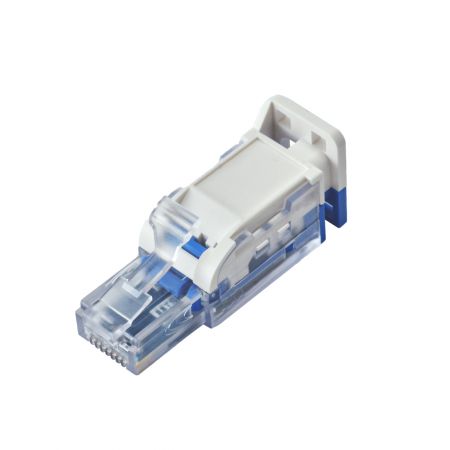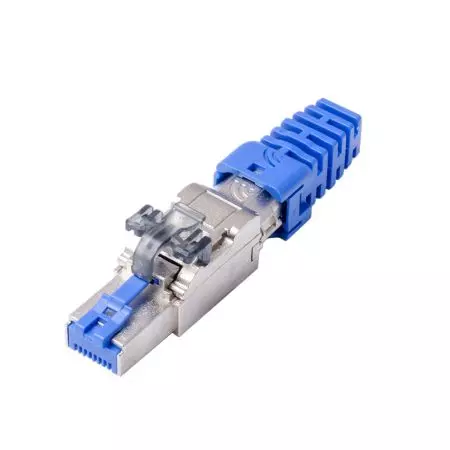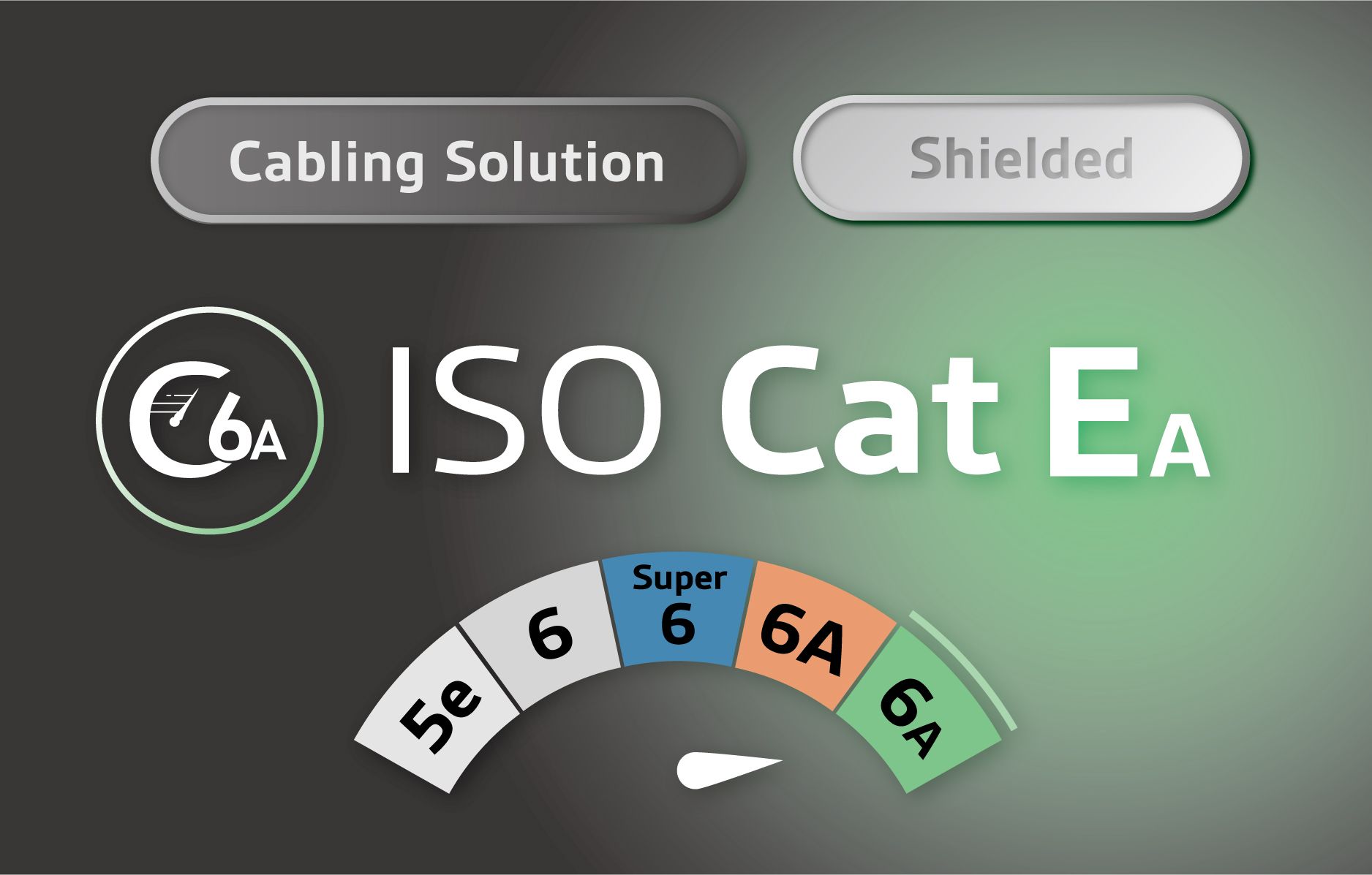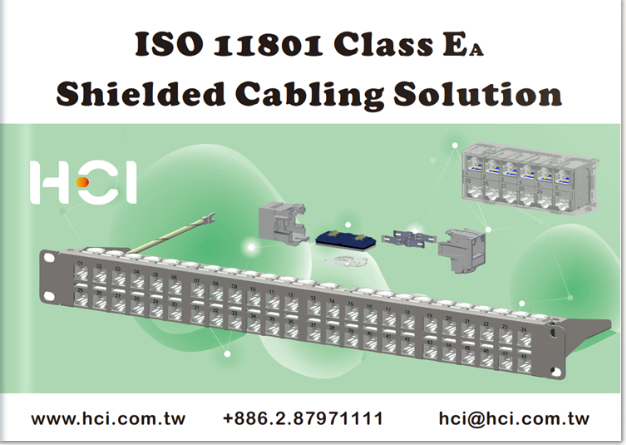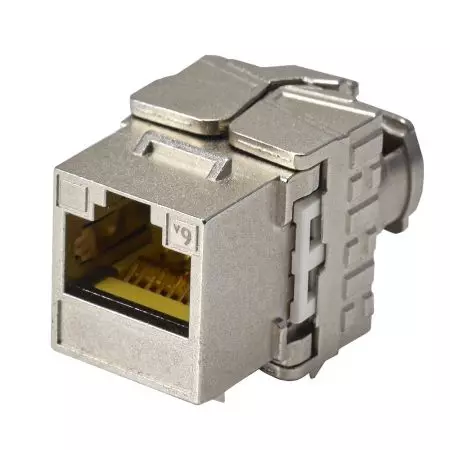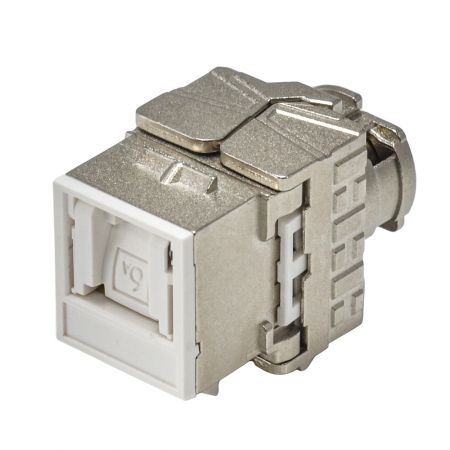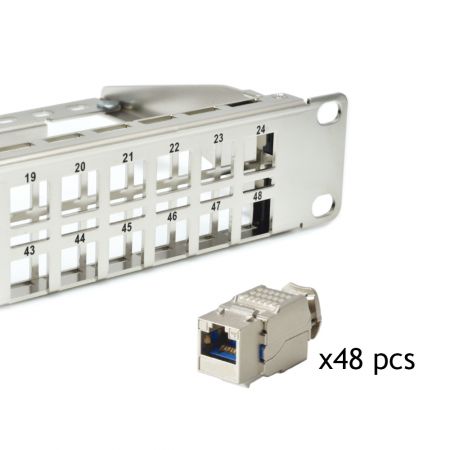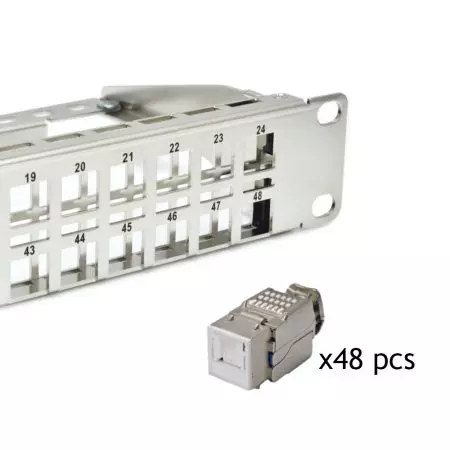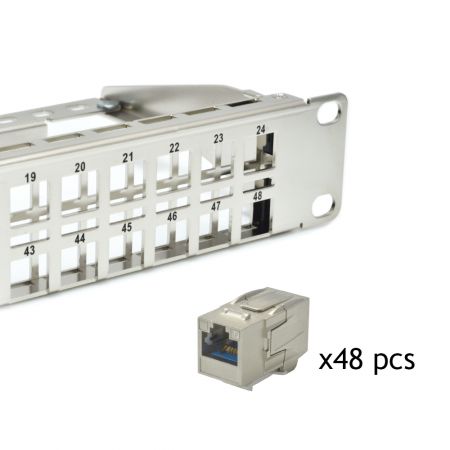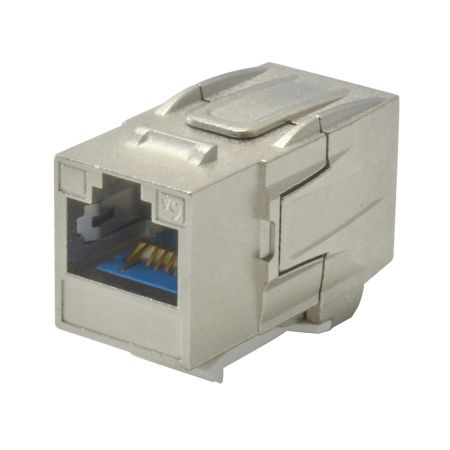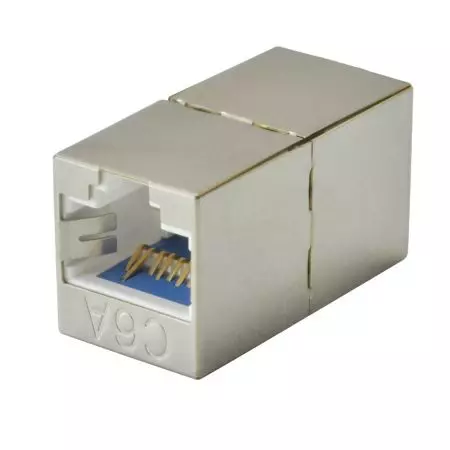STP - ISO-11801 Class Ea Cabling
Shielded
How to ensure that the cabling you possess is free from risks?
There are two blind spots that many users overlook when validating transmission reliability. The first blind spot occurs when they terminate the keystone jacks at both ends and do the testing without taking the cable length into account. The second blind spot arises from the assumption that there is only one limitation specified for a Cat 6A link.
In reality, the cable length plays a significant role in validating transmission performance. Put simply, longer cable lengths tend to result in better performance, while shorter cable lengths can lead to increased signal coupling among pairs, negatively impacting performance.
Furthermore, as previously mentioned, TIA-568.2-D provides a more lenient Cat 6A link limitation that extends from 330MHz to 500MHz. In contrast, ISO-11801 adheres to a more stringent ClassEA link limitation with a gradual slope.
Below is a typical example illustrating that a "LONG LINK" exhibits better performance than a "SHORT LINK." In a TIA-568.2-D Cat 6A chart, the performance is measured at 10.4dB over a distance of 90 meters, whereas it is only 6.3dB over a distance of 10 meters.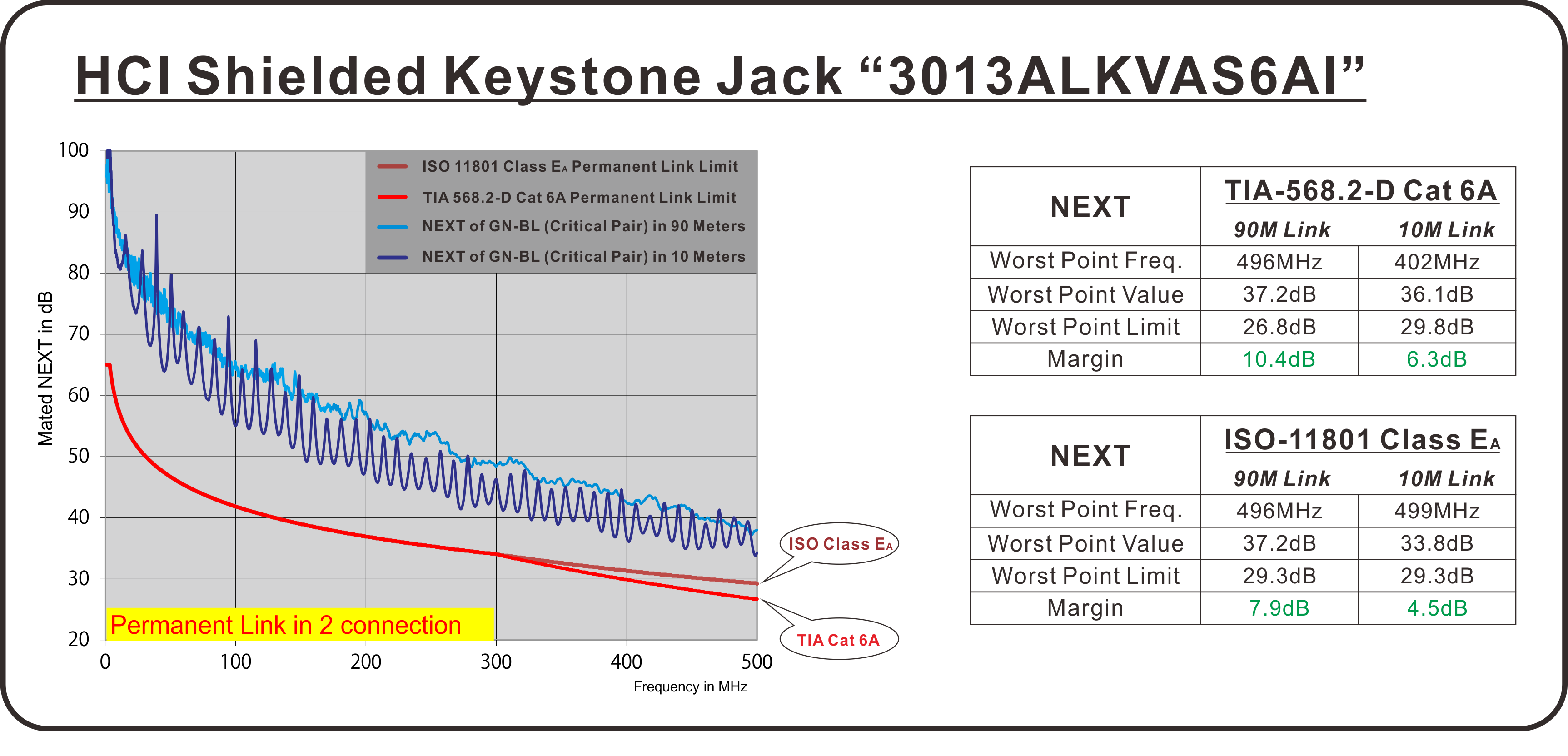
From the same graph, it is evident that even with the worst-case scenario of a "SHORT LINK in 10 meters," using a high-quality keystone jack can still achieve a performance of 4.5dB within the ISO-11801 ClassEA limit. Furthermore, it naturally attains an even better performance of 6.3dB within the TIA-568.2-D Cat 6A standard.
Don't give up the Feed-Through connection
Feed-through RJ-45 to RJ-45 type patch panels have gained popularity in recent times due to their convenient Plug-and-Play feature when connecting to switches and routers. However, it is a widely recognized fact that Feed-Through panels can result in a downgrade of transmission performance throughout the entire cabling system.
By satisfying these two conditions, there is no need to compromise on omitting the use of Feed-Through RJ-45 to RJ-45 connections.
Opting for a reliable Inline-Coupler that provides you with equivalent performance, supporting various interconnections or cross-connections that you may encounter on-site.
Use these couplers with Component-Rated products in the cabling. The exceptional performance of Component-Rated Keystone Jacks and Patch Panels helps compensate for any degradation introduced by the couplers.
The graph below depicts a typical channel setup featuring a Feed-Through panel connected with 3 meters patch cords at both ends, specifically near the equipment end. The impact of Feed-Through connections on high-frequency signals is evident, but it remains within an acceptable range.%20on%20Feed-Through%20Connection-3m.png)
Now, let's examine the most extreme configuration where a Feed-Through panel is connected with 1 meter patch cords at both ends. The impact of the disturbance on high frequencies is significantly pronounced, yet it still manages to meet the channel requirements of both ISO-11801 Class EA and TIA-568.2-D Cat 6A.%20on%20Feed-Through%20Connection-1m.png)
Indeed, ISO-11801 ClassEA cabling proves to be a practical solution for resolving the compromised channel performance resulting from the use of Feed-Through connections.
Screened is the optimal choice, no doubt
HCI screened connectivity utilizes Die-Cast material with air-tight metallic mechanism. The high screen effectiveness and shield integrity of the full-metal-jacket not only effectively mitigate electromagnetic interference (EMI) but also address the issue of Alien Crosstalk generated from neighboring ports. 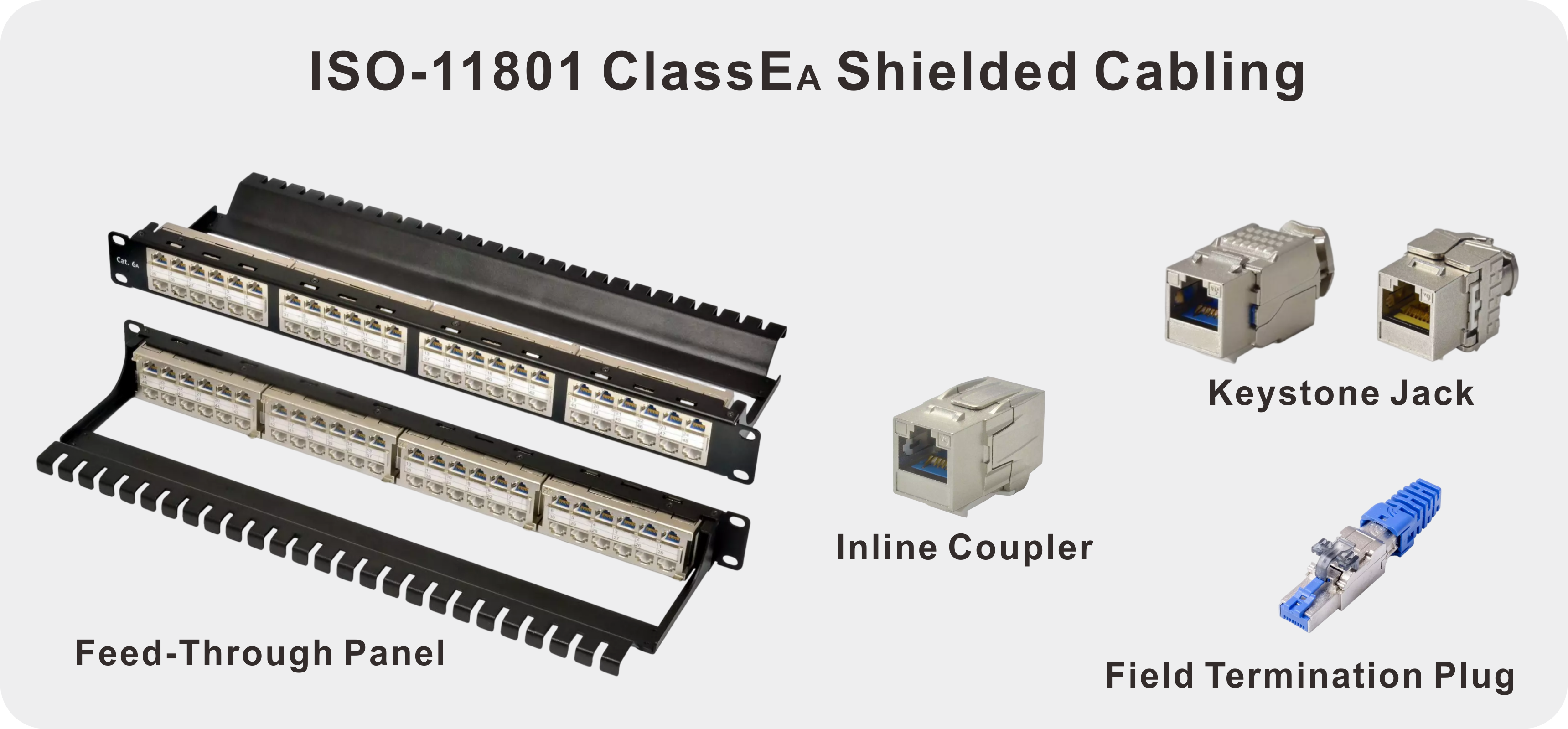
Furthermore, when considering Power over Ethernet (PoE) applications, a Screened System offers improved heat dissipation and attenuation performance, making it an ideal choice for future-proof utilization.
Download the brochure ↓↓

